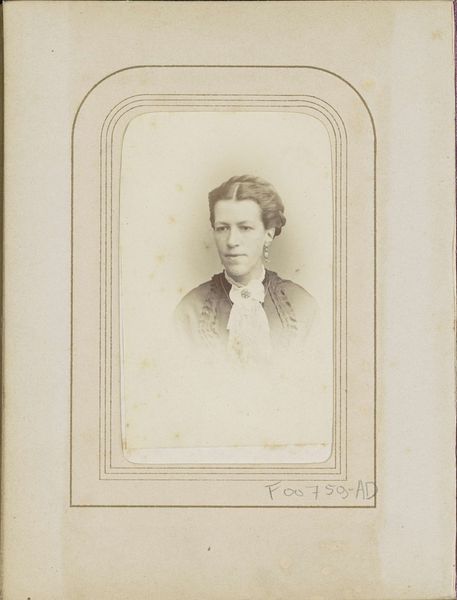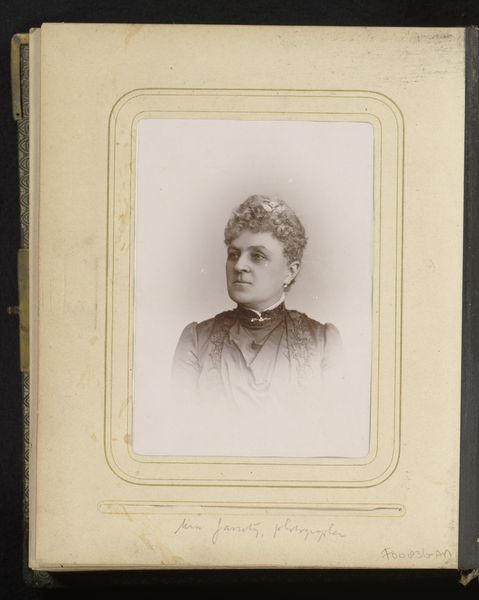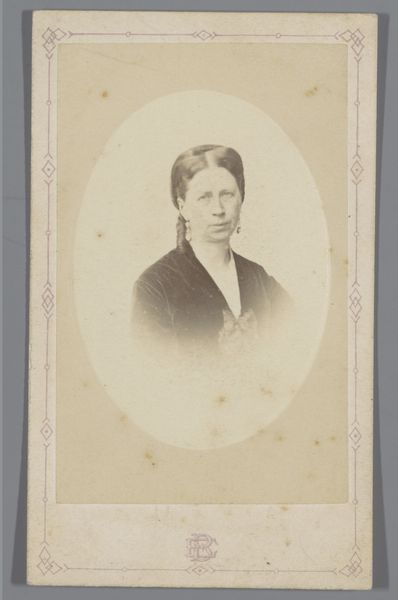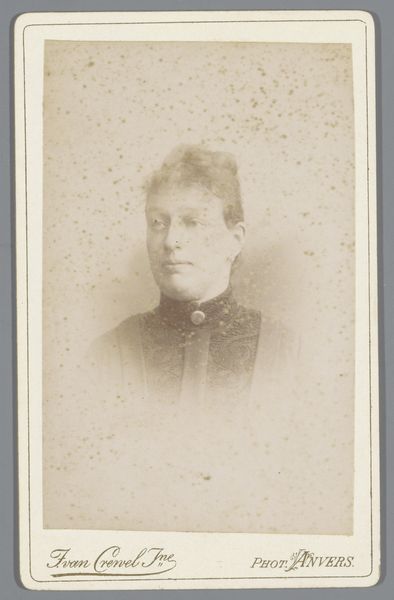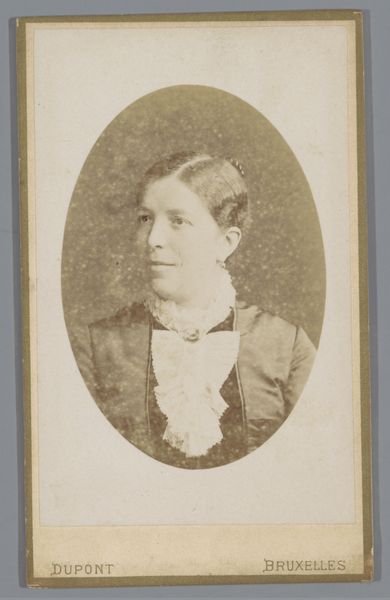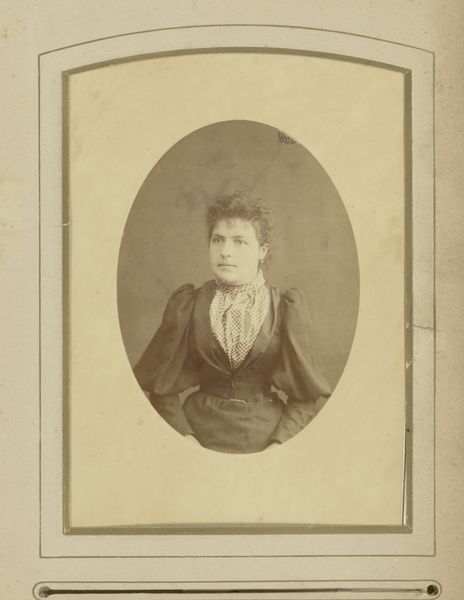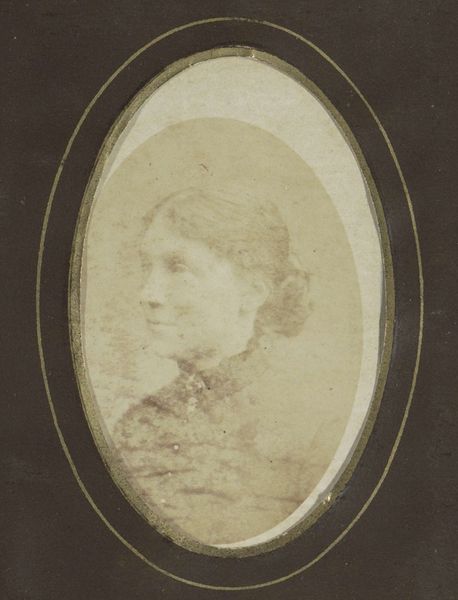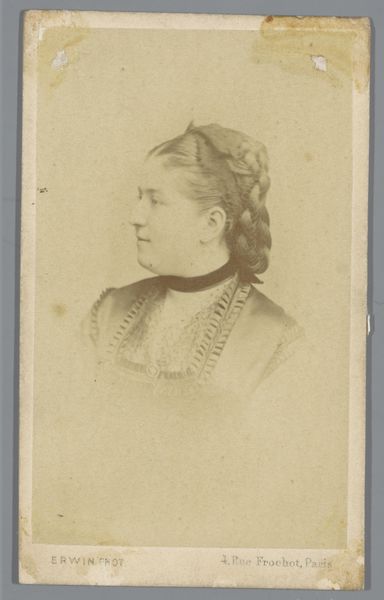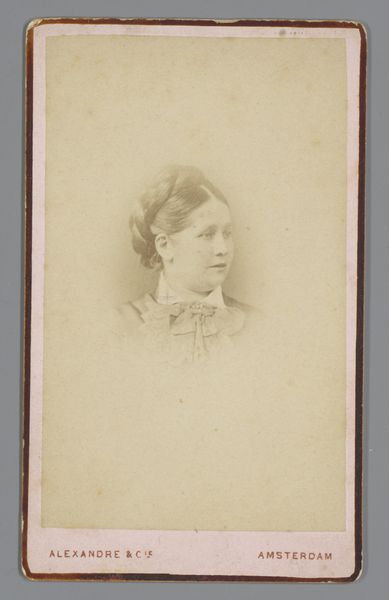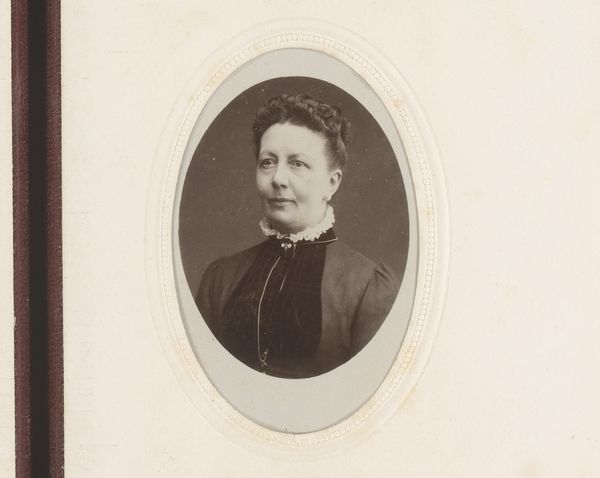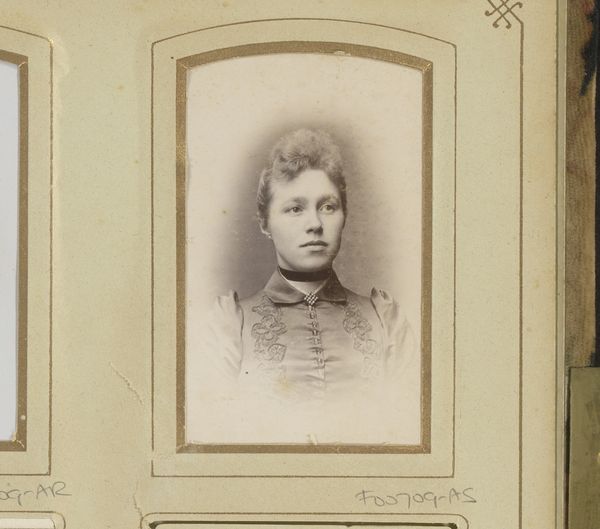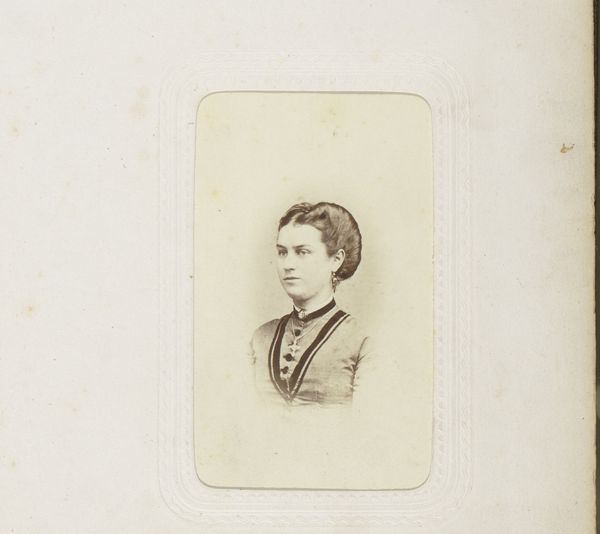
photography
#
portrait
#
photography
#
realism
Dimensions: height 85 mm, width 51 mm
Copyright: Rijks Museum: Open Domain
Editor: So this photograph, simply titled "Portret van een vrouw," was taken sometime between 1867 and 1885 by Johannes Wilhelmus Franciscus Offenberg. There's a real sense of dignity in her pose, almost a stoicism. How do you interpret this image? Curator: This portrait, rendered in the objective language of photography, becomes a powerful cultural artifact. Consider the sitter's adornments – the lace, the brooch, the dark, possibly mourning attire. Each detail resonates with the social expectations of the Victorian era, but also perhaps a deeper, more personal narrative. Editor: A narrative of mourning perhaps? You see the brooch, the lace and the dark attire suggesting grief. Curator: Potentially, yes, or somber reflection. But look closer – do these aren't just fashion, they are emblems. A way of signifying respectability, wealth, a position within society. This image, like so many of its time, served to construct and project a particular identity. Editor: So you’re saying the seemingly candid is in fact carefully crafted? That all of these photographic symbols function together. Curator: Precisely. Consider how the studio portrait provided an arena to solidify social hierarchies. Can we glean anything of this woman's personal experience beyond the performative self that’s staged? It presents many unresolved tensions between the personal and the imposed cultural demands. Editor: It's interesting how even in its stark realism, the photograph creates, almost insists on, an encoding. I see what you mean. I had not noticed that. Curator: The photograph itself has become a symbol over time, a token from the past. It invites speculation. I’m now intrigued to examine more works from this period.
Comments
No comments
Be the first to comment and join the conversation on the ultimate creative platform.
